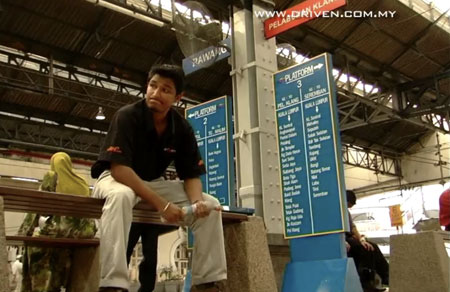
Did you watch Episode 7 of Driven, where our Harvinder used public transport to race from one point of town to another with Sharizan and Alis? Actually, race isn’t the right word, as the man and his umbrella was nowhere as quick as the the bike and car of his co-hosts in completing the route. He lost of course, and didn’t save that much money compared to Sharizan’s Kawasaki.
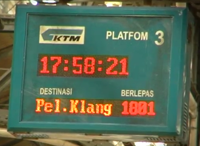 I myself am no stranger to the KTM Komuter, which surely is the worse rail line in the Klang Valley. You look at the timing board and it reads “Rawang 1730” but when the countdown to 5:30 stops, the train doesn’t appear and the board recalculates, adding another 20 minutes to the waiting time. And when it finally arrives, getting into the coach is like going to war. If you prevail, pray hard that the four persons glued to you don’t have body odour. Had a bad day at work? Rest assured that the journey home will do its best to add to your misery.
I myself am no stranger to the KTM Komuter, which surely is the worse rail line in the Klang Valley. You look at the timing board and it reads “Rawang 1730” but when the countdown to 5:30 stops, the train doesn’t appear and the board recalculates, adding another 20 minutes to the waiting time. And when it finally arrives, getting into the coach is like going to war. If you prevail, pray hard that the four persons glued to you don’t have body odour. Had a bad day at work? Rest assured that the journey home will do its best to add to your misery.
I’m sure that many of you have similarly bad experiences or even endure it everyday. Some have it better than others, depending on the location of your workplace and home, and which rail line/bus you depend on, but I’m sure everyone will agree that Klang Valley’s public transport system is nowhere near world-class and desperately needs an overhaul. The Government knows this for a fact too, which is the reason Suruhanjaya Pengangkutan Awam Darat (SPAD) or the Land Public Transport Commission came into existence.
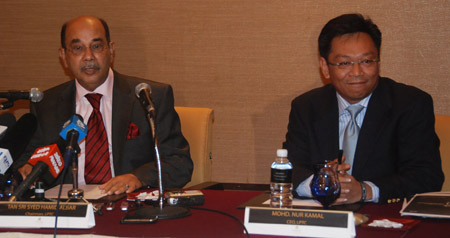
Headed by former Home Minister Tan Sri Syed Hamid Albar as Chairman and special adviser to the Transport Ministry Mohd Nur Ismail Mohamed Kamal as CEO, SPAD will draw up policies, plan, regulate and enforce regulations concerning public transport. To do this, the commission will absorb existing bodies such as the Railway Department and the Commercial Vehicle Licensing Board.
Currently, there are 15 government agencies and departments with a say in how public transport is run. SPAD will solve this overlapping objectives and powers and introduce integrated policies and regulations. “We want to get away from the ad hoc-ish style of solving problems and want to have a holistic view of the matter,” Mohd Nur Ismail said. SPAD, which will “champion the public transport cause” and try to get us out of our cars and bikes, will assume powers in September 2010, when the Road Transport Amendment Act is gazetted.
SPAD, which reports directly to the Prime Minister, will carry out initiatives for the National Key Result Area (NKRA) focusing on the Klang Valley. Their goals appear highly ambitious: SPAD aims to raise Klang Valley’s public transport usage from the current 12% to 25% in 2012 ad 30% by 2015 (for comparison, cities such as Singapore, Hong Kong, London and Paris have a figure of up to 70%). How are they going to achieve this will be of interest to stakeholders such as you and me.
Remember the days of the Bas Mini? I remember taking No.32 to school; they were driven like hot hatches by hooligans, but at least they were frequent, fast and dependable. Do you know that public transport usage then was three times higher than the current figure? One of SPAD’s big tasks is to transform bus services, and Mohd Nur Ismail says that it’s vital to “rethink the economies of the bus industry” as some routes are overlooked by operators because they are unprofitable, which leads to zero bus service for that unfortunate area.
There’s also a possibility of Bas Mini style transport making a comeback, but only as shuttles within residential areas and to train stations, not to the city. It’s still early days of course, and we hope to hear more from SPAD when their bus plans are fleshed out.
Bus is the short term solution. Rail is the future, and increasing ridership for the existing rail lines is the first on the plate for SPAD. The Kelana Jaya LRT line (formerly PUTRA LRT) has seen the introduction of newly delivered four-coach trains. 35 of these driverless sets have been purchased from Canadian company Bombardier for RM1.5bil. Both Kelana Jaya and Ampang lines will be extended by 17km and 17.7km respectively, with 13 new stations added to each line. Work is expected to start in November and will go on for three years. There’s also a proposed MRT system under the 10th Malaysia Plan.
Fortunately, the KTM Komuter is not left out. The much criticised rail line does not have enough train sets at the moment, but has placed an order for 38 new six-car sets that are expected to arrive in 2012 (current EMUs are are three-car sets). This will triple the line’s capacity from the current 100,000 per day.
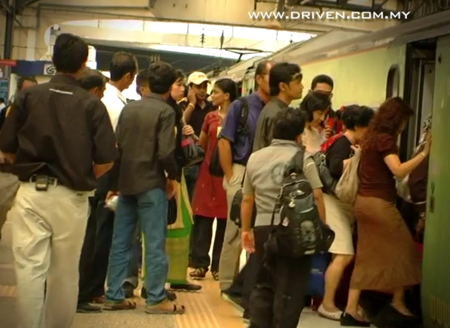
Many of these plans are already in place and it’s SPAD’s job to be the captain of the ship, so to speak, steering the various plans and initiatives in one integrated direction. For sure, many will sneer at it (indeed, journos at the briefing gave the panel a tough time), but it’s only fair to give SPAD some time to prove itself. “Public confidence is low, to put it very mildly,” Syed Hamid Albar said, adding that one of SPAD’s biggest challenges will be to deal with other government agencies and departments.
More information as it comes our way, but for the meantime, share your experiences and suggestions, have your say or rant away (you never know, someone might be taking notes), but keep vulgarities for private teh tarik sessions!
Looking to sell your car? Sell it with Carro.

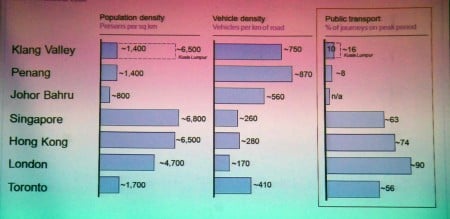
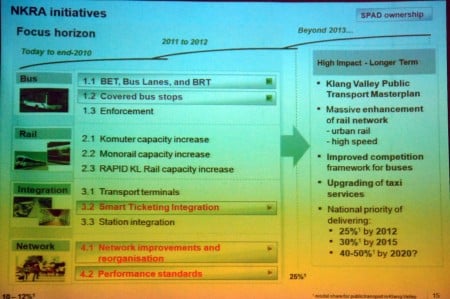










AI-generated Summary ✨
Comments expressed frustration over the inadequacy of Malaysia's public transport, citing overcrowded trains, limited coverage, and poor infrastructure. Many highlighted the need for more lines, better management, and learning from countries with efficient systems like Singapore, Japan, and Switzerland. The politicization, corruption, and private cronyism were criticized as obstacles, causing delays and high costs. Some comments emphasized that public transport should be a government priority, with suggestions to return services to government control, reduce fares, and improve safety and security measures. A few sarcastically joked about officials not using public transport themselves. Overall, there is a strong desire for genuine improvements, increased transparency, and proactive planning to make public transport a desirable and reliable option.